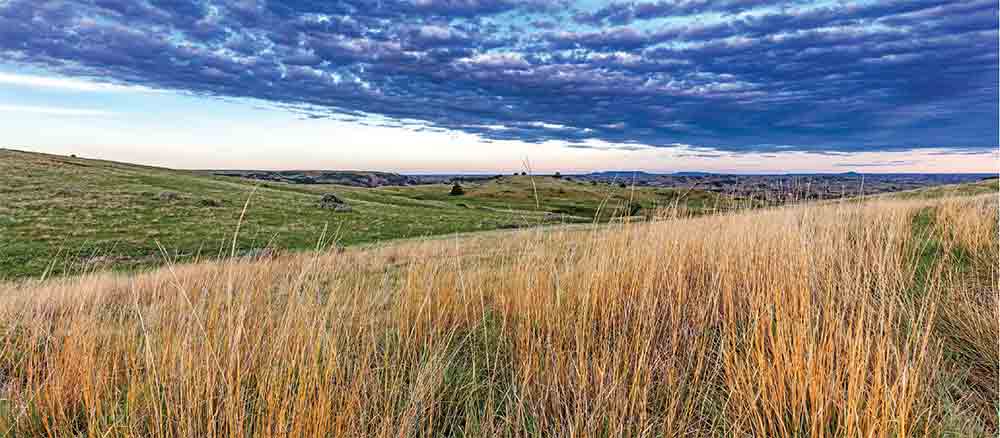
By Matthew R. March, MNRD
Polk County Extension Agent
If you have ever attended any lecture or workshop on wildlife management, you have likely heard that bluestem grasses are important for wildlife. However, not all bluestems are created equal and in fact many of the grasses we call bluestems are not even related to each other. Many landowners are unaware of this difference and believe all bluestems are created equal.
If you are managing your property for wildlife such as ground-nesting birds, you should strive for “good” species of bluestem which can include big bluestem (Andropogon gerardii) and little bluestem (Schizachyrium scoparium). Little bluestem and big bluestem can both provide excellent cover for ground-nesting birds and are good forage plants for livestock. These two grasses when managed properly can provide cattle up to 4,000 pounds per acre dry forage a year. Big bluestem is easily recognizable by its turkey foot seed head. During early summer, little bluestem crude protein levels can reach 8-9% but can become as high as 12%. Both grasses produce culms or seed heads during late summer and fall. Here in east Texas, a unique variety of little bluestem called pinehill bluestem has become adapted to the sandy hills commonly found throughout our area.
The next species of bluestems may be called the “bad” species as they generally have less wildlife value, do not produce as much forage, and are rated poor for livestock-grazing value. These bluestems our bushy bluestem (Andropogon glomeratus), splitbeard bluestem (Andropogon ternarius), broomsedge bluestem (Andropogon virginicus) and silver bluestem (Bothriochloa laguroides). Distinct from the rest of this group, silver bluestem is rated as being fair grazing for livestock. As a land manager you should obviously strive for the “good” species of bluestems. But sometimes you must work with what is present on the site and should strive for performing good wildlife habitat techniques and not worrying about the presence of “bad” bluestems. Typically, these “bad” bluestems are found more on disturbed sites, waste sites, old crop fields, overgrazed pastures, invading hay fields and clear-cut sites.
Lastly, are the “ugly” bluestems and one species claims this title - King Ranch or KR bluestem (Bothriochloa ischaemum). KR bluestem is invasive, can outcompete our native bluestems, and has a lesser value to wildlife than the “good” bluestems. Sadly, eradication options require intensive management, are expensive, and can still fail. Prescribed fire typically used to promote growth of “good” bluestems will not have any negative impact on KR bluestem stands. It should be noted KR bluestem is rated fair in value for livestock grazing.
After reviewing the bluestems, you may feel overwhelmed with ID and distinguishing between the good, the bad and the ugly. Most of these species are easily recognizable with a little practice and sample grasses are available at the extension office for your reference.









Comment
Comments